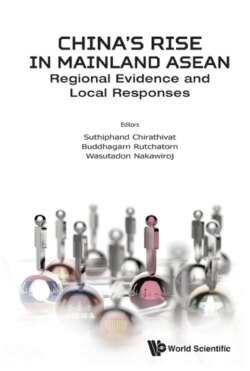Читать книгу China's Rise in Mainland ASEAN - Группа авторов - Страница 25
На сайте Литреса книга снята с продажи.
2.7.Mainland ASEAN as China’s Supplementary Pathway
ОглавлениеWhile the nascent LMC framework and previous mechanisms are being developed in the midst of uncertain conditions, China has recently embarked on another grand scheme endowed with tremendous potential for further impact on Mainland ASEAN. President Xi Jinping announced on April 13, 2018 that the Central Committee of the CPC had decided to support the mega-project of turning the province and island of Hainan into a free-trade zone and finally a free-trade port system. Although the Hainan free-trade zone and port follow the experience of Hong Kong and Singapore, it will nevertheless be designed and implemented with Chinese characteristics. In addition to large development funding provided by the Chinese state apparatus, investors from all over the world are welcome to join in this grand scheme. This announcement was made at the 30th anniversary of the establishment of Hainan as a special economic zone. The current guideline specifies that the Hainan free-trade port system will be “basically established” by 2025, and it will become “more mature” in 2035 (Lu, 2018b). Note that the timing of 2035 corresponds exactly to the first phase of the basic realization of socialist modernization in the larger national plan.
Xi Jinping’s announcement and the initial details of the plan for the Hainan free-trade zone and port system are crucial in many respects. It is very likely that Hainan will become one of China’s strategic points of contact in the BRI scheme. Moreover, the control of China’s maritime path along the South China Sea will be indispensable. As for Mainland ASEAN countries, the Hainan mega-project may signify that China’s routes of connection between its southern areas and the end of the peninsular at Singapore may vary and contain more options. This can relegate the existing plans via land-based connectivity in Mainland ASEAN such as the high-speed railway links, particularly the one that passes through Thailand, to supplementary pathways. At best, Mainland ASEAN connectivity projects will function as strategic parts of China’s endeavors to avoid the middle-income trap by providing increasing opportunities to generate the supply-side structural reform for regional development in marginal south and southwest provinces. Of course, Mainland ASEAN will always embody major sources of resources, investment opportunities, products for export and import, and venues for the enhancement of Chinese tourist enterprises as well as providing alternatives for migration, work, and residence, either during short-term or long-term periods. Yet, as time passes by, the prospect of Mainland ASEAN being an essential pathway for China’s enterprises in its new era has become less and less promising. It is even less encouraging when China’s broader frameworks for strategic partnership and shared future are taken into account.
Xi Jinping Thought contains grand theories, ideas, and practices, but to what extent Mainland ASEAN countries fit in these schemes seems uncertain. As a matter of fact, Mainland ASEAN may simply constitute a supplementary pathway for the intended destinations of China elsewhere. President Xi Jinping very often uses Chinese expressions and maxims to convey his points. The Thai word for “pathway” is “thang phan.” And as a popular Thai saying goes — nobody wants to simply be a thang phan.
